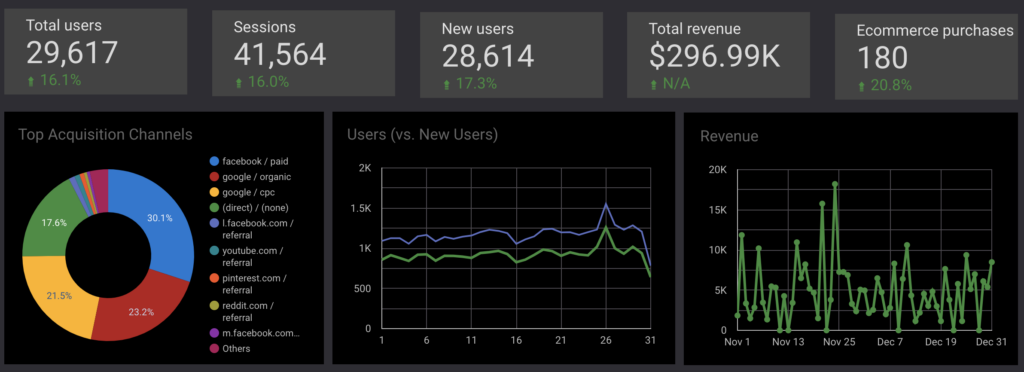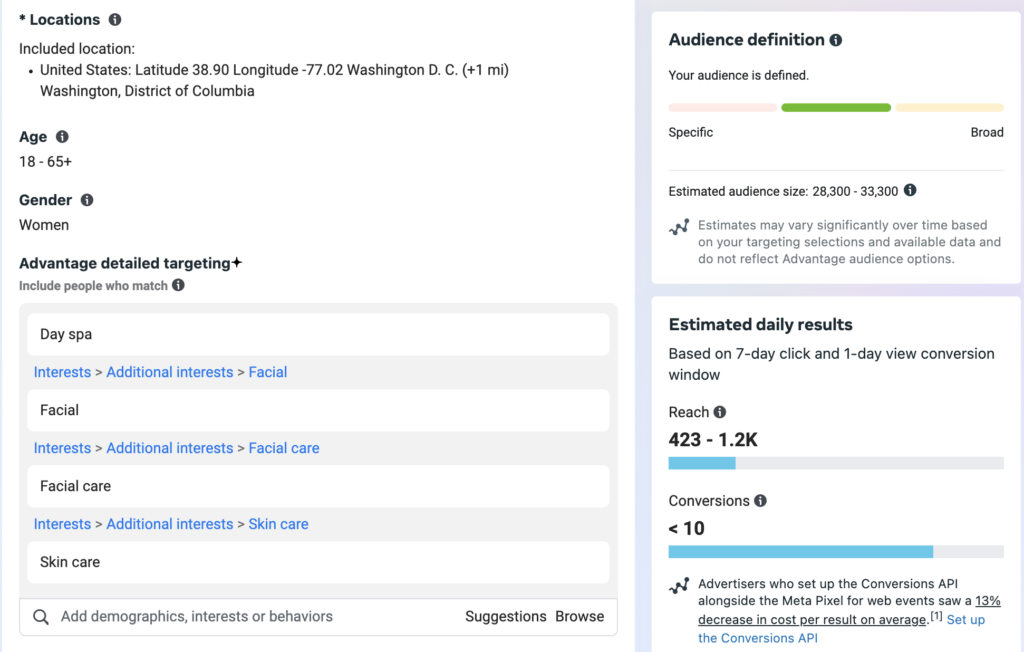In today’s digital landscape, businesses are constantly seeking ways to gain a competitive edge. Leveraging data analytics has become essential for crafting marketing strategies that truly resonate with target audiences. By harnessing the power of data-driven insights, companies can make informed decisions, optimize their marketing campaigns, and achieve measurable results that drive growth and success.
This article explores practical steps to leverage data analytics for effective marketing strategies. From understanding the importance of data analytics in marketing to implementing actionable insights, readers will discover how to use data analysis to enhance their marketing efforts. By the end, marketers will be equipped with the knowledge to craft data-driven campaigns, boost conversion rates, and maximize their return on investment in today’s competitive digital landscape.
Table of Contents
ToggleUnderstanding the Importance of Data Analytics in Marketing
In today’s digital landscape, data analytics has become an indispensable tool for businesses seeking to gain a competitive edge. The ability to make data-driven decisions is crucial in the ever-evolving marketing environment. Marketing analytics refers to the practice of measuring, managing, and analyzing data from various channels and tactics to improve marketing effectiveness and drive better business outcomes.
With the vast amount of data generated through social media, websites, email campaigns, and other digital platforms, businesses have access to unprecedented amounts of information. However, raw data alone does not provide actionable insights. This is where marketing analytics plays a vital role in transforming raw data into meaningful information that can drive decision-making.


Types of Data Analytics
There are three primary types of marketing analytics that businesses can leverage to gain valuable insights and drive better results:
- Descriptive Analytics: This type focuses on summarizing historical data to provide insights into past trends and events. It helps businesses understand what has happened in the past by analyzing key metrics such as website traffic, social media engagement, sales revenue, and customer acquisition costs. Descriptive analytics answers the important questions: “What happened, and why?”
- Predictive Analytics: This type uses past data to make predictions about future outcomes. It typically involves large volumes of data and machine learning algorithms that can use that data to make increasingly accurate predictions of customer behavior over time. Predictive analytics aims to answer the question: “What’s going to happen next?”
- Prescriptive Analytics: This type focuses on using past marketing data to recommend the most impactful actions a business can take. It’s often used in tandem with marketing automation to ensure that its recommendations can be carried out instantly. Prescriptive analytics is less focused on the question, “What’s going to happen?” and more focused on the question, “How can you impact what happens?”
Benefits of Data-Driven Marketing
Leveraging data analytics in marketing offers numerous benefits:
- Informed Decision-Making: Marketing analytics enables businesses to make data-driven decisions by providing accurate and timely information. It helps marketers identify which strategies are effective and which are not by analyzing key performance indicators (KPIs).
- Customer Understanding: By analyzing customer data collected from multiple sources such as customer relationship management (CRM) systems or social media platforms, businesses can gain a comprehensive understanding of their customers’ preferences, behaviors, and needs. This allows them to create targeted marketing campaigns that resonate with their target audience and build stronger customer relationships.
- Optimization of Marketing Activities: Marketing analytics helps optimize marketing activities by providing insights into the performance of various channels and campaigns. Marketers can identify which tactics are driving the most return-on-investment (ROI), allocate resources more effectively, and fine-tune their strategies based on data-driven insights.
- Personalization: Through marketing analytics, businesses can segment their audience based on different factors such as demographics, behavior, or purchase history. This enables marketers to create highly personalized experiences and deliver targeted messages that are more likely to resonate with individual customers.
- Improved ROI Measurement: Marketing analytics allows businesses to measure the success of their marketing efforts in terms of ROI. By tracking key metrics and analyzing the impact of different marketing activities on revenue generation, organizations can allocate their budgets effectively and prioritize initiatives that deliver the highest return.
- Competitive Advantage: In today’s highly competitive marketplace, organizations that leverage marketing analytics gain a significant edge over their competitors. By harnessing the power of data-driven insights, businesses can uncover hidden opportunities, identify market trends, and stay ahead of the curve.
Key Marketing Metrics to Track
To effectively leverage data analytics in marketing, it’s crucial to track the right metrics. Here are some key marketing metrics to focus on:
- Customer Acquisition Cost (CAC): This metric measures how much it costs to acquire a new customer.
- Customer Lifetime Value (CLV): CLV quantifies the long-term value each customer brings to a business. By calculating CLV, businesses can understand the profitability of acquiring and retaining different customer segments.
- Conversion Rate: This metric measures the percentage of website visitors who take a desired action, such as making a purchase or filling out a form.
- Return on Investment (ROI): ROI measures the profitability of marketing campaigns by comparing the revenue generated to the costs incurred.
- Engagement Metrics: These include metrics such as click-through rates, bounce rates, and time spent on site, which provide insights into how users interact with your content.
- Marketing Qualified Leads (MQLs): MQLs are generally defined as bottom-of-the-funnel prospects who have indicated they’re ready to purchase.
- Social Media Engagement: This metric helps ensure you’re delivering the right content to the right people in the right place.
By tracking these metrics, businesses can gain a comprehensive understanding of their marketing performance and make data-driven decisions to optimize their strategies.
6 Ways to Leverage Data Analytics for Your Marketing Success
1. Identify Key Metrics That Matter
In today’s data-driven marketing landscape, identifying and tracking the right metrics is crucial for quantifying success. Marketers need to focus on strategic metrics that are meaningful to their business and directly connected to desired outcomes. Some key metrics to consider include:
- Customer Acquisition Cost (CAC)
- Customer Lifetime Value (CLV)
- Click-through Rate (CTR)
- Conversion Rate
- Return on Investment (ROI)

By monitoring these metrics, marketing teams can better understand their performance and explain the impact on organizational growth to stakeholders. It’s essential to choose metrics that align with specific marketing goals and strategies.
2. Understand Customer Behavior
Analyzing customer behavior data is vital for creating effective marketing strategies. This data encompasses all customer interactions with a product, from the beginning of the customer journey to ongoing usage. By conducting customer behavior analysis, marketers can:
- Identify trends and patterns to predict future customer wants and needs
- Discover key drivers of customer satisfaction
- Create personalized experiences for different customer segments
- Increase customer retention and lifetime value
Utilizing tools like website analytics, social media monitoring, and surveys can provide valuable insights into customer preferences and habits. This information helps marketers optimize their efforts and create more targeted campaigns.
3. Enhance Predictive Analytics
Predictive analytics has become an essential tool for marketers looking to stay ahead of the competition. By leveraging historical data, statistics, and machine learning algorithms, predictive analytics helps forecast future outcomes and optimize decision-making processes. Some key applications of predictive analytics in marketing include:
- Lead scoring: Identifying high-value leads and prioritizing sales efforts
- Customer segmentation: Dividing the audience into distinct groups based on shared characteristics
- Churn prediction: Identifying customers at risk of leaving and implementing retention strategies
- Product recommendations: Suggesting relevant products or services to customers for cross-selling and upselling opportunities
Implementing predictive analytics can lead to more effective marketing campaigns, improved customer engagement, and increased ROI.
4. Optimize Campaigns in Real-Time
Real-time marketing optimization has become crucial in today’s fast-paced digital landscape. By leveraging data analytics, marketers can make informed decisions and adjust their campaigns on the fly. Some key benefits of real-time optimization include:
- Immediate feedback on campaign performance
- Ability to adapt to changing consumer behavior
- Improved targeting and personalization
- Increased efficiency in resource allocation
Marketers can use real-time data to optimize various aspects of their campaigns, such as ad placement, messaging, and timing. This approach helps ensure that marketing efforts remain relevant and effective in an ever-changing marketplace.

5. Improve ROI With Data-Driven Decisions
Data-driven marketing delivers actual information on the effectiveness of marketing efforts, allowing for more informed decision-making. By leveraging data analytics, marketers can:
- Measure the success of individual campaigns and strategies
- Identify areas for improvement and optimization
- Allocate resources more effectively
- Justify marketing spend and budget allocations
Tracking KPIs and analyzing data from multiple sources helps marketers make data-driven decisions that lead to improved ROI and overall marketing performance.
6. Monitor Competitor Performance
Keeping a close eye on competitor performance is crucial for staying ahead in the market. Data analytics can help marketers gain valuable insights into their competitors’ strategies and performance. Some ways to leverage data for competitor analysis include:
- Media monitoring and social listening
- Tracking competitors’ website traffic and SEO performance
- Analyzing competitors’ ad campaigns and marketing channels
- Monitoring competitors’ product offerings and pricing strategies
By gathering and analyzing this data, marketers can identify opportunities, anticipate market trends, and refine their own strategies to maintain a competitive edge.

Let SL Development Guide Your Digital Marketing Analytics Strategy
In today’s digital age, SL Development leverages data analytics to create impactful, data-driven marketing strategies that deliver measurable results. We offer services from strategy formation to campaign launch, grounded in competitor and audience analysis. Our expertise in lead generation, audience targeting, and conversion optimization helps businesses scale effectively and achieve their goals. Using tools like Google Analytics, Google Ads, Meta Ad Manager, and Semrush, we provide transparent reporting and testing to optimize campaigns, making us a cost-effective and flexible partner for digital marketing success. Contact us today to discover how our cost-effective solutions can drive results for your business.




